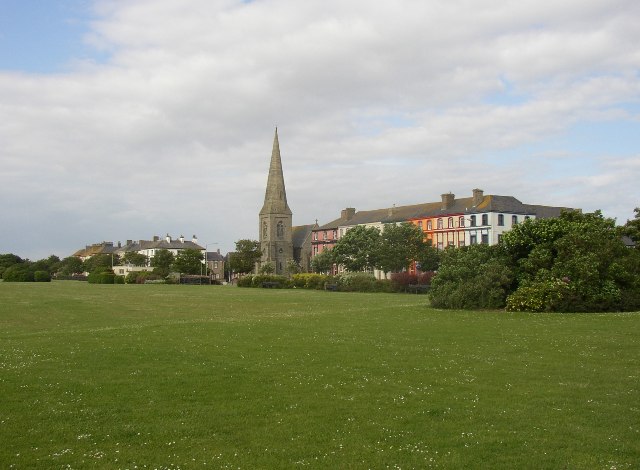Silloth started out as an agricultural settlement, with
activities such as salt production and crop cultivation overseen by the monks
of nearby Holme Cultram Abbey. The name
derives from the term 'sea lathes', the lathes being a type of barn used to
store grain. Then in the 19th century
the railway arrived in town and this, together with the building of a number of
grand hotels, transformed the town into a Victorian seaside resort. In those days the building now occupied by
the amusement arcade was the Bathing Establishment, offering a variety of hot
and cold baths. Those who preferred to
bathe in the sea had bathing machines at their disposal, wooden huts pulled
down to the sea by horses, in which the bathers could protect their modesty
while changing into their bathing gear before taking the plunge. The branch line that brought about the
popularity of the resort is now disused, but the resort remains popular, with
its wide, tree-lined streets, the flower-filled expanse called The Green facing
across the Solway Firth where numerous events are held, and the sand and
shingle beach. Aside from the railway,
steamers bound for Liverpool and Dublin
used to leave from the 19th century harbour, but these have also since
disappeared, leaving the harbour to the pleasure craft that make use of
it. Silloth's 18-hole golf course is one
of the best in the North, and has hosted two ladies' open championships. The Solway Coast Discovery Centre in Silloth showcases the wildlife, heritage and landscapes of the stretch of coast.
Map of the area.
 | |
| Silloth Green - geograph.org.uk - 87864. Photo by Humphrey Bolton, via Wikimedia Commons |
No comments:
Post a Comment